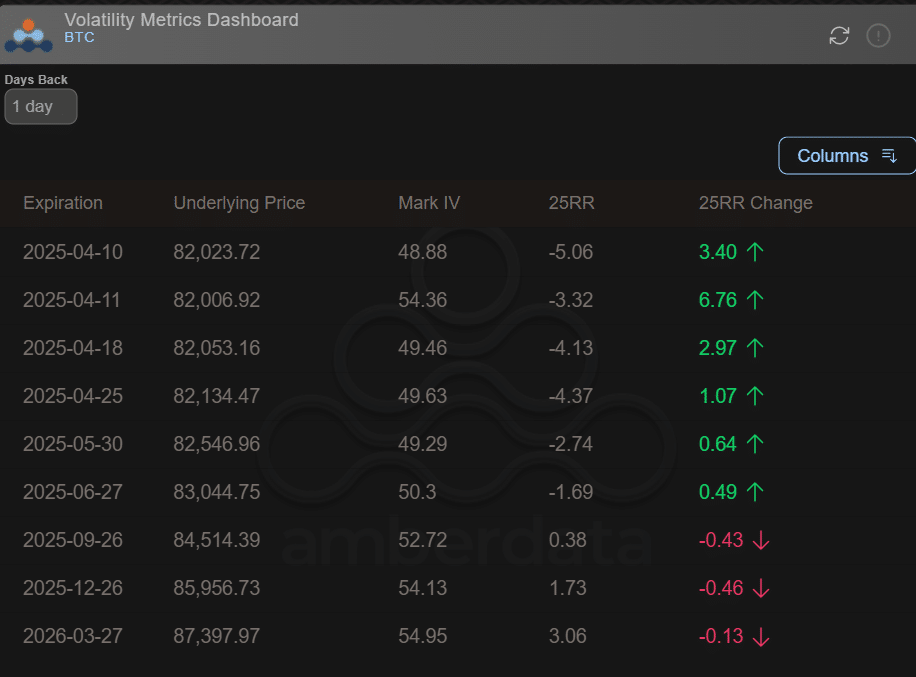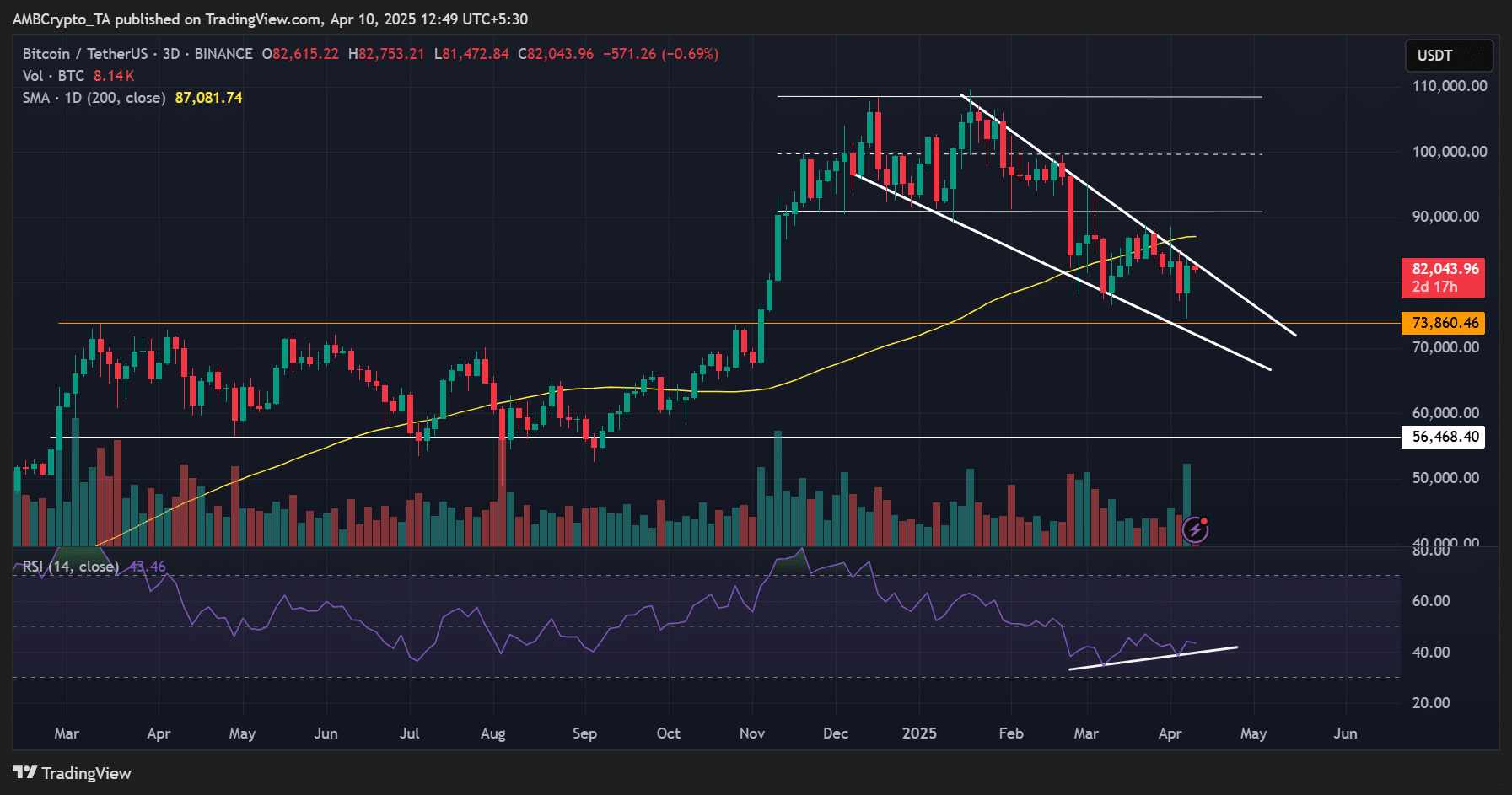| COINOTAG recommends • Exchange signup |
| 💹 Trade with pro tools |
| Fast execution, robust charts, clean risk controls. |
| 👉 Open account → |
| COINOTAG recommends • Exchange signup |
| 🚀 Smooth orders, clear control |
| Advanced order types and market depth in one view. |
| 👉 Create account → |
| COINOTAG recommends • Exchange signup |
| 📈 Clarity in volatile markets |
| Plan entries & exits, manage positions with discipline. |
| 👉 Sign up → |
| COINOTAG recommends • Exchange signup |
| ⚡ Speed, depth, reliability |
| Execute confidently when timing matters. |
| 👉 Open account → |
| COINOTAG recommends • Exchange signup |
| 🧭 A focused workflow for traders |
| Alerts, watchlists, and a repeatable process. |
| 👉 Get started → |
| COINOTAG recommends • Exchange signup |
| ✅ Data‑driven decisions |
| Focus on process—not noise. |
| 👉 Sign up → |
-
The ongoing U.S.-China tariff tensions are casting shadows over Bitcoin’s (BTC) performance, with potential implications for its market momentum.
-
In light of recent developments, analysts suggest a resolution could either propel BTC’s price upwards or further restrict growth, depending on future trade deals.
-
According to COINOTAG sources, market experts believe that BTC could see a significant rally if a favorable tariff agreement is reached.
U.S.-China trade negotiations are pivotal for Bitcoin’s trajectory, with potential binary outcomes affecting its volatility and market positioning.
Assessing the Impact of Tariffs on Bitcoin’s Market Dynamics
The latest news surrounding U.S.-China trade disagreements highlights the intricate relationship between traditional economics and cryptocurrency markets. Following President Trump’s announcement of a 90-day tariff pause, Bitcoin rebounded significantly, underscoring how sensitive the crypto market is to shifts in international trade policy.
Analyst Joe McCann asserts that if a deal emerges from the ongoing discussions, it could drive Bitcoin prices higher as markets react positively to the news. He remarked, “If a China deal comes, the market explodes. If it doesn’t, it’s already priced.” This statement encapsulates the market’s cautious optimism while navigating the complexities of economic negotiations.
In contrast, Bitwise’s Jeff Park cautions that ongoing pressure from a weakened Chinese yuan (CNY) might negatively impact risk assets, including Bitcoin. “With what irreversibly happened with weakened yuan now exporting deflation + 10% tariff creating growth drag, the net outcome is still negative for risk assets,” he warned, pointing towards an overall pessimistic outlook should trade tensions escalate.
| COINOTAG recommends • Professional traders group |
| 💎 Join a professional trading community |
| Work with senior traders, research‑backed setups, and risk‑first frameworks. |
| 👉 Join the group → |
| COINOTAG recommends • Professional traders group |
| 📊 Transparent performance, real process |
| Spot strategies with documented months of triple‑digit runs during strong trends; futures plans use defined R:R and sizing. |
| 👉 Get access → |
| COINOTAG recommends • Professional traders group |
| 🧭 Research → Plan → Execute |
| Daily levels, watchlists, and post‑trade reviews to build consistency. |
| 👉 Join now → |
| COINOTAG recommends • Professional traders group |
| 🛡️ Risk comes first |
| Sizing methods, invalidation rules, and R‑multiples baked into every plan. |
| 👉 Start today → |
| COINOTAG recommends • Professional traders group |
| 🧠 Learn the “why” behind each trade |
| Live breakdowns, playbooks, and framework‑first education. |
| 👉 Join the group → |
| COINOTAG recommends • Professional traders group |
| 🚀 Insider • APEX • INNER CIRCLE |
| Choose the depth you need—tools, coaching, and member rooms. |
| 👉 Explore tiers → |
BTC’s Resilience Amid Trade Pressures
Despite the challenges posed by potential tariffs, cryptocurrency enthusiasts point towards Bitcoin’s inherent strengths. Notably, BitMEX founder Arthur Hayes highlighted that persistent tariffs could lead to increased money printing by the Federal Reserve, which historically has favored cryptocurrency prices. “No deal, PBOC continues a very gradual Yuan weakening. Shit ’bout to get spicy. Luckily, $BTC loves money printing and associated CNY weakness,” he remarked, indicating a potential bullish scenario for Bitcoin if monetary policies shift.
Additionally, the tariff situation is allegedly making the case for Bitcoin’s increased utility as a medium of exchange, particularly in trade settlements involving nations like Russia and China—a trend noted by VanEck analysts.
| COINOTAG recommends • Exchange signup |
| 📈 Clear interface, precise orders |
| Sharp entries & exits with actionable alerts. |
| 👉 Create free account → |
| COINOTAG recommends • Exchange signup |
| 🧠 Smarter tools. Better decisions. |
| Depth analytics and risk features in one view. |
| 👉 Sign up → |
| COINOTAG recommends • Exchange signup |
| 🎯 Take control of entries & exits |
| Set alerts, define stops, execute consistently. |
| 👉 Open account → |
| COINOTAG recommends • Exchange signup |
| 🛠️ From idea to execution |
| Turn setups into plans with practical order types. |
| 👉 Join now → |
| COINOTAG recommends • Exchange signup |
| 📋 Trade your plan |
| Watchlists and routing that support focus. |
| 👉 Get started → |
| COINOTAG recommends • Exchange signup |
| 📊 Precision without the noise |
| Data‑first workflows for active traders. |
| 👉 Sign up → |
Examining BTC’s Breakout Potential and Market Sentiment

Source: Amberdata
| COINOTAG recommends • Traders club |
| ⚡ Futures with discipline |
| Defined R:R, pre‑set invalidation, execution checklists. |
| 👉 Join the club → |
| COINOTAG recommends • Traders club |
| 🎯 Spot strategies that compound |
| Momentum & accumulation frameworks managed with clear risk. |
| 👉 Get access → |
| COINOTAG recommends • Traders club |
| 🏛️ APEX tier for serious traders |
| Deep dives, analyst Q&A, and accountability sprints. |
| 👉 Explore APEX → |
| COINOTAG recommends • Traders club |
| 📈 Real‑time market structure |
| Key levels, liquidity zones, and actionable context. |
| 👉 Join now → |
| COINOTAG recommends • Traders club |
| 🔔 Smart alerts, not noise |
| Context‑rich notifications tied to plans and risk—never hype. |
| 👉 Get access → |
| COINOTAG recommends • Traders club |
| 🤝 Peer review & coaching |
| Hands‑on feedback that sharpens execution and risk control. |
| 👉 Join the club → |
As April progresses, heavy hedging continues to dominate the market sentiment, as indicated by the negative readings on the 25 delta risk reversal indicator. This uptick in demand for bearish options reflects growing caution regarding Bitcoin’s potential movements amid ongoing geopolitical uncertainties.
However, from a technical analysis perspective, Bitcoin has formed a bullish falling wedge pattern, suggesting that the extended downtrend could be nearing its end. An examination of price charts indicates that should favorable macroeconomic conditions arise, BTC might regain strength, especially when considering last year’s high price point above $70K as a critical threshold for traders.

Source: BTC/USDT, TradingView
| COINOTAG recommends • Exchange signup |
| 📈 Clear control for futures |
| Sizing, stops, and scenario planning tools. |
| 👉 Open futures account → |
| COINOTAG recommends • Exchange signup |
| 🧩 Structure your futures trades |
| Define entries & exits with advanced orders. |
| 👉 Sign up → |
| COINOTAG recommends • Exchange signup |
| 🛡️ Control volatility |
| Automate alerts and manage positions with discipline. |
| 👉 Get started → |
| COINOTAG recommends • Exchange signup |
| ⚙️ Execution you can rely on |
| Fast routing and meaningful depth insights. |
| 👉 Create account → |
| COINOTAG recommends • Exchange signup |
| 📒 Plan. Execute. Review. |
| Frameworks for consistent decision‑making. |
| 👉 Join now → |
| COINOTAG recommends • Exchange signup |
| 🧩 Choose clarity over complexity |
| Actionable, pro‑grade tools—no fluff. |
| 👉 Open account → |
Conclusion
In summary, the evolving dynamics of U.S.-China tariffs could significantly influence Bitcoin’s price motion in the near term. With analysts divided on the potential outcomes, market participants are advised to keep a close watch on developments. Regardless, the resilience of Bitcoin and its potential to serve as a hedge against monetary fluctuations cannot be overlooked. A successful resolution, along with favorable macro conditions, may set the stage for a notable price recovery.
| COINOTAG recommends • Members‑only research |
| 📌 Curated setups, clearly explained |
| Entry, invalidation, targets, and R:R defined before execution. |
| 👉 Get access → |
| COINOTAG recommends • Members‑only research |
| 🧠 Data‑led decision making |
| Technical + flow + context synthesized into actionable plans. |
| 👉 Join now → |
| COINOTAG recommends • Members‑only research |
| 🧱 Consistency over hype |
| Repeatable rules, realistic expectations, and a calmer mindset. |
| 👉 Get access → |
| COINOTAG recommends • Members‑only research |
| 🕒 Patience is an edge |
| Wait for confirmation and manage risk with checklists. |
| 👉 Join now → |
| COINOTAG recommends • Members‑only research |
| 💼 Professional mentorship |
| Guidance from seasoned traders and structured feedback loops. |
| 👉 Get access → |
| COINOTAG recommends • Members‑only research |
| 🧮 Track • Review • Improve |
| Documented PnL tracking and post‑mortems to accelerate learning. |
| 👉 Join now → |









